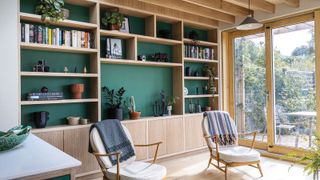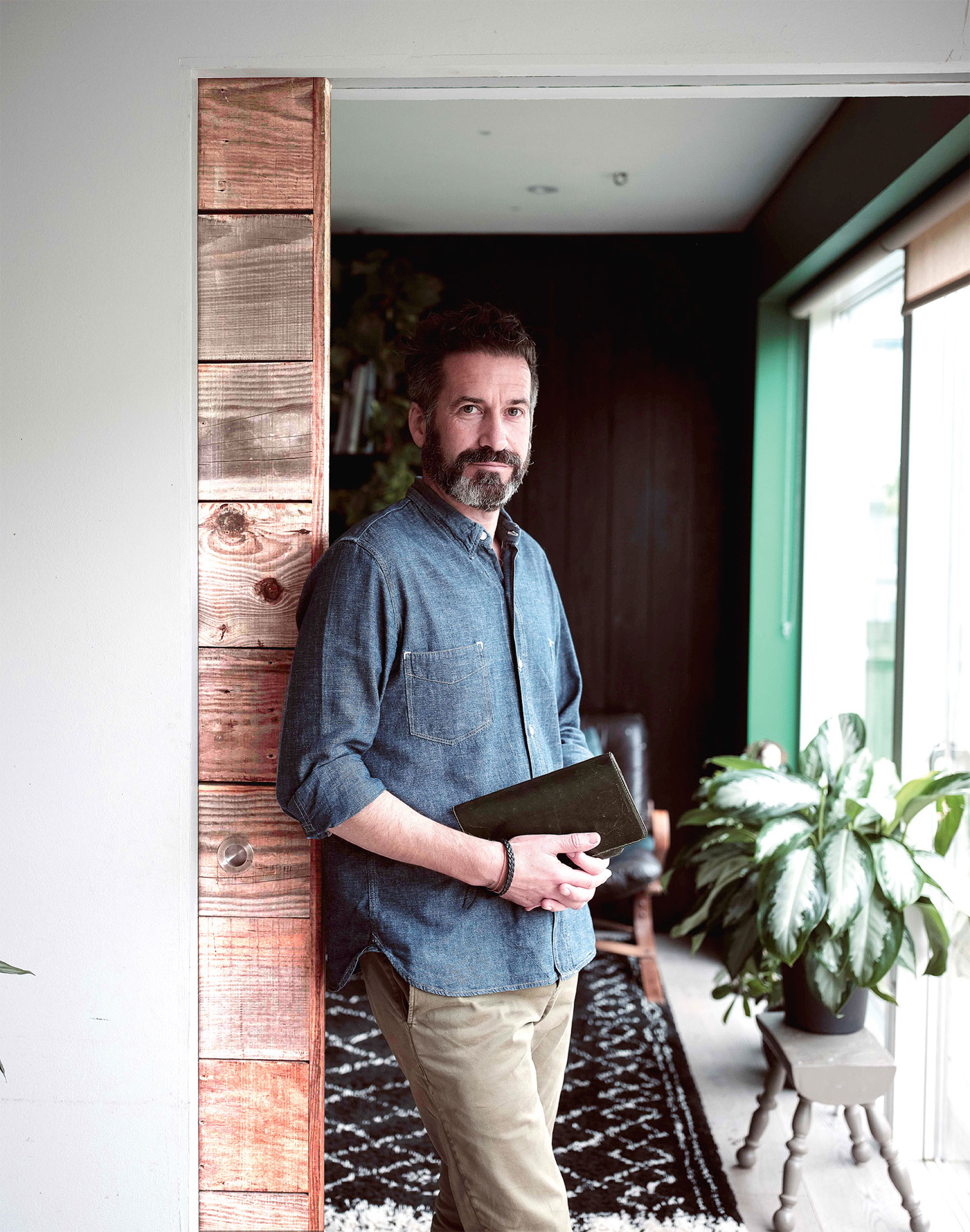Are you supporting biodiversity in your home? Here's 4 easy steps to try, according to a sustainable design expert
An expert in biophilic and sustainable design, Oliver Heath shares some simple steps you can take to introduce biodiversity into your home and garden

It’s easy to discount the positive impact of a thriving natural environment on our health, largely because many of us view ourselves as separate from nature. In fact, we rely heavily on biodiversity — from the food we eat to the air we breathe as well as limiting disease (1). In industry we refer to this as ‘Ecosystem Services’, the direct and indirect benefits that contribute to human wellbeing and health (2).
Biodiversity is currently in crisis; global wildlife populations have declined by 69% since 1970 (3), so it’s now important that we look to all corners of our lives to take care of our natural ecosystems — including consideringbuilding a healthy home.
When we imagine supporting biodiversity, it’s likely we picture it happening in parks, rivers, forests, and beaches. But there is a growing awareness that it exists everywhere, and we can make small additions to our homes to be supportive.
So, what steps can we take to boost biodiversity in and around our homes?
1. Consider upgrading your lawn
Having a tidy, clipped lawn might seem like a homeowner’s dream, but they do little to support a thriving ecosystem as they are often made up of one or two grass species and don’t usually occur within natural environments (4).
Now, we’re not suggesting you grow a wildflower meadow (but you can if you want!), which is considerably less functional, but to introduce biodiversity you should consider more diverselawn ideasto create usable green space.
Clover lawns are a great alternative as not only do they attract pollinators, they are also more drought and weed-resistant, require less mowing, and don’t require fertilisation (5). Limiting chemical use doesn’t stop indoors, and we should consider the impact of using them within our green spaces.
If you fancy adding colour to your outdoor space, you might consider tapestry lawns which, ironically, aren’t lawns at all but are made up of low interweaving plants, like wild violet and creeping buttercups. Like clover lawns, they require less maintenance and chemicals than traditional grass and are great for supporting pollinators. It’s important to consider your colour palette and to ensure you have a good foundation plant. It’s worth noting it may take up to a year to establish a mature tapestry lawn.

2. Get up to speed with holistic gardening
We know that well-planted gardens are an excellent way of boosting greenery, and many of us prefer them to concrete or paved outdoor areas. But what else can you add to yourgarden landscaping ideasto improve biodiversity? Just like humans, and most other living things, the fauna that inhabits our garden needs water and, while this might seem obvious, a lot of household gardens lack access to it.
You don’t need a grand water feature to welcome in the pollinators and the birds — something as simple as a sunken Belfast sink will be just as effective. Experiment with rocks and Carex grasses, which will help soften the addition of water, making it feel like an integrated part of the garden. Alongside water, log piles and bug hotels are a great way of supporting surrounding bug life.

3. Invite biodiversity into your home
If you lack outdoor space, there are still ways to improve biodiversity around the house. Window boxes can introduce flowering plants for pollinators. Take this a step further by integrating vertical planters — excellent for balconies they can also be used to grow fresh produce.
Window feeders can attract local birds and are an effective way of engaging children in a nature-based activity. It’s particularly important for those in urban areas where green space might be limited, with the rise of ‘nature-deficit disorder’ — the negative impact of not spending enough time outdoors in nature (7).

4. Get your neighbours on board
Championing biodiversity doesn’t have to just be a household affair, and we are seeing how communities are working together to support the ecosystems in their streets. The websiteRewild My Streetis a great resource for inspiration if you are looking to boost biodiversity in your neighbourhood.
它可能看起来像一个棘手的任务,考虑太多of the space surrounding our homes is made up of roads and footpaths constructed from concrete, but little additions can make all the difference. For example, not paving over entire front gardens and leaving space for flower beds or trees to soak up rainwater. Shrubs, such as Cotoneaster franchetii, have also been found to trap pollutants — limiting the impact of air pollution for those living close to busy roads (9).
Taking on board just one or two of the suggestions could offer significant support to the fauna and flora around you. Our homes and small green spaces might seem insignificant in the fight to boost biodiversity, but stitched together they create a diverse patchwork of land where all nature – including ourselves – can flourish.

References
1.who.int
2.nature.scot
3.LIvingplanet.panda.org
4.weforum.org
5.forbes.com
6.architecturaldigest.com
7.greatergood.berkeley.edu
8.RHS
Get the Homebuilding & Renovating Newsletter
Bring your dream home to life with expert advice, how-to guides and design inspiration, direct to your inbox.

Oliver Heath is an expert in biophilic and sustainable design, and in his regular series he will help you to understand how to create a healthy home. He is passionate about human centred design and the role that nature has to play creating sustainable and regenerative spaces. He runs Oliver Heath Design, a sustainable architecture and interior design consultancy and practice.
Most Popular
Bring your dream home to life with expert advice, how-to guides and design inspiration, direct to your inbox.
Thank you for signing up to Homebuilding. You will receive a verification email shortly.
There was a problem. Please refresh the page and try again.
